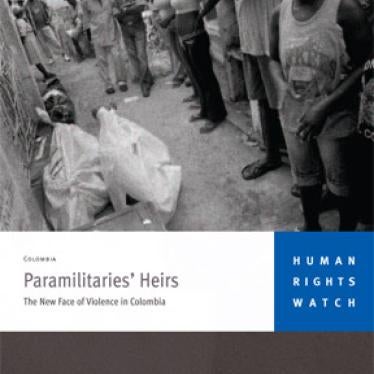(Washington, DC) – Colombia’s new Victims and Land Restitution Law offers a historic opportunity to restore millions of acres of land to Colombians who have been driven from their homes by violence, Human Rights Watch said today. Successful implementation of the law will depend on the government’s ability to protect displaced communities from the powerful armed groups that oppose the restitution of these lands.
Signed into law by President Juan Manuel Santos on June 10, 2011, the legislation, commonly referred to as the Victims Law, aims to return stolen and abandoned land to internally displaced Colombians and provide reparations – including financial compensation – to victims of human rights violations and infractions of international humanitarian law.
“Colombia has today taken a major step toward addressing the legacy of violence and abuse that has affected millions of citizens,” said José Miguel Vivanco, Americas director at Human Rights Watch. “By passing this historic legislation, President Santos and the Colombian Congress have advanced the fundamental right of forcibly displaced people and other victims to obtain reparation for the abuses they have endured.”
Over the past two decades, more than 3.7 million Colombians have been forcibly displaced by paramilitaries, guerrillas, and state forces, leaving behind an estimated 16 million acres of land.
Displaced communities seeking restitution of their lands have been subject to repeated violence, threats, and intimidation. An estimated 50 leaders involved in these efforts have been assassinated since 2005. On June 7, an unidentified gunman shot and killed Ana Fabricia Córdoba, a prominent community leader from Medellin who had campaigned for land restitution. Córdoba had reported multiple death threats prior to her murder.
It is widely believed that many of these attacks have been carried out by successor groups to paramilitaries, which emerged out of the flawed demobilization process for members of the United Self-Defense Forces of Colombia (AUC). These groups, which the government labels “emerging criminal gangs,” are currently the primary threat to human rights in Colombia. They drove a 34 percent increase in massacres in 2010 and are a key factor behind continued high levels of forced displacements.
“The ongoing violence against displaced communities will make effective implementation of this legislation a real challenge,” Vivanco said. “It is vital that the government takes bold measures to protect the law’s beneficiaries from the brutal armed groups that oppose land restitution.”
In 2005, the General Assembly of the United Nations adopted the “Basic Principles and Guidelines on the Right to a Remedy and Reparation for Victims of Gross Violations of International Human Rights Law and Serious Violations of International Humanitarian Law.” In doing so, the international community confirmed the obligation on states to provide effective remedies to victims, including reparation, and that states must show full respect for other principles and rights protected by international human rights law in meeting its obligations.
One potential shortcoming of the Victims Law is the lack of clarity as to whether it will cover people displaced by paramilitary successor groups, whose victims also have a right to obtain reparations, Human Rights Watch said.







